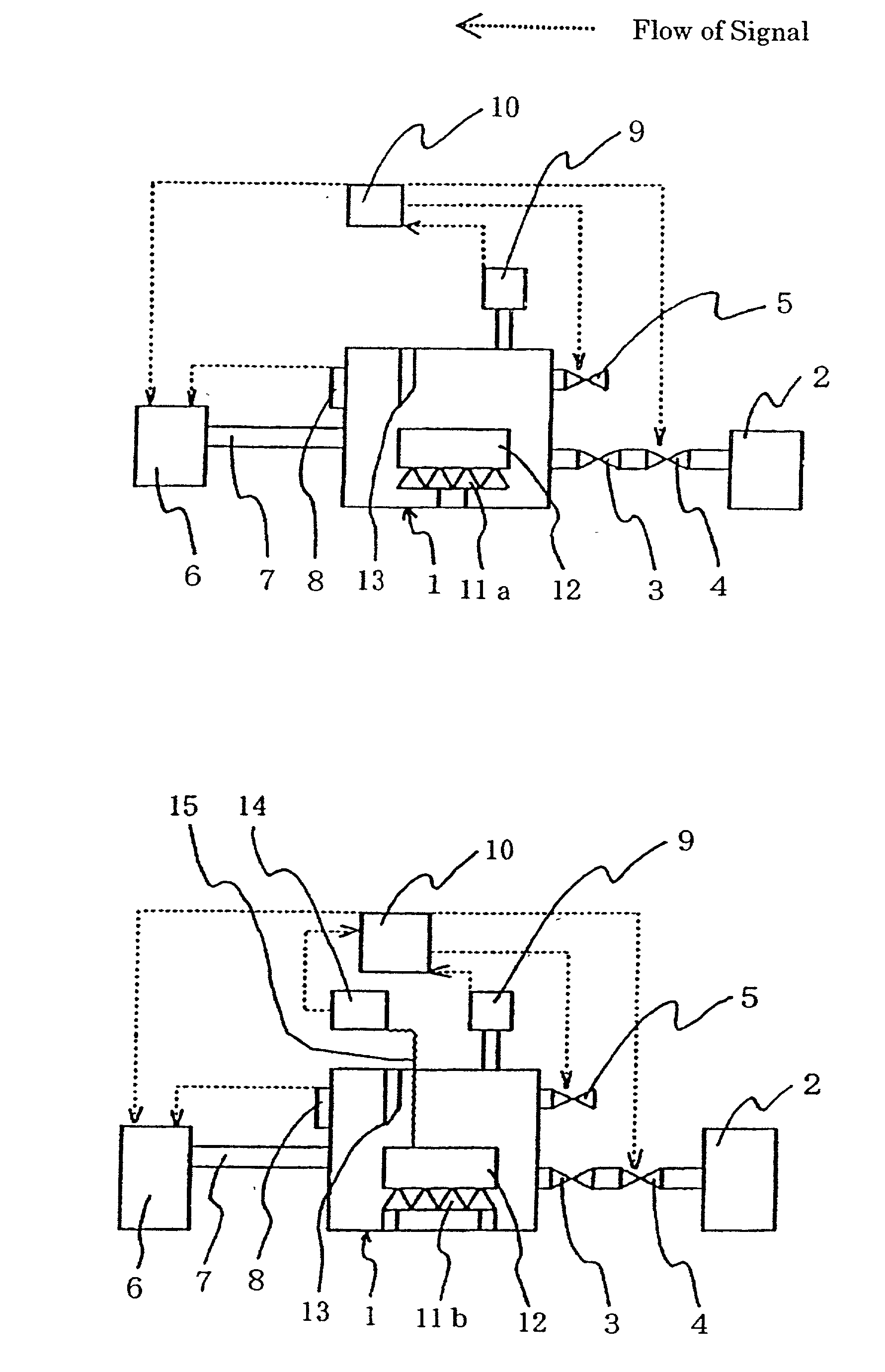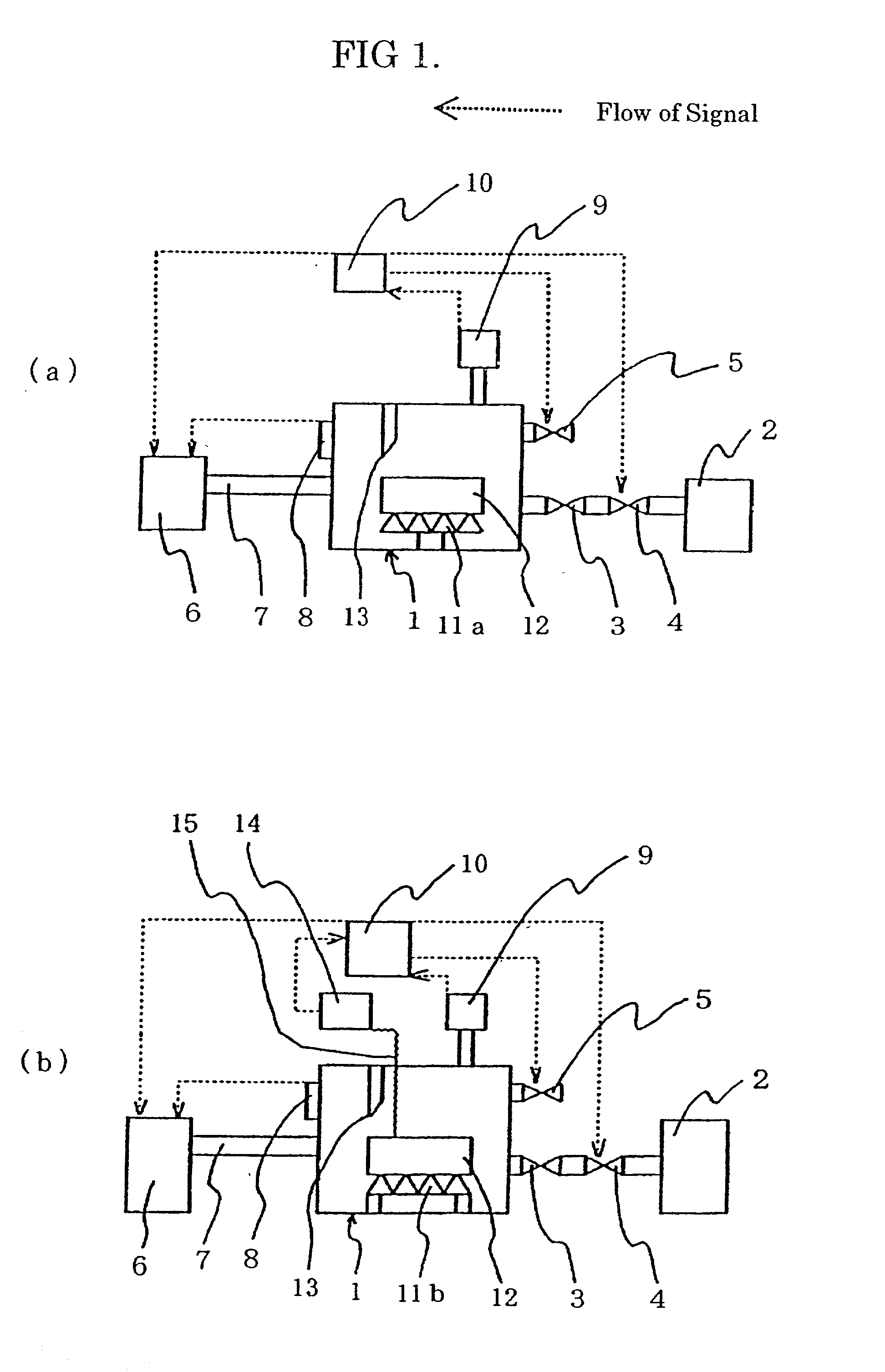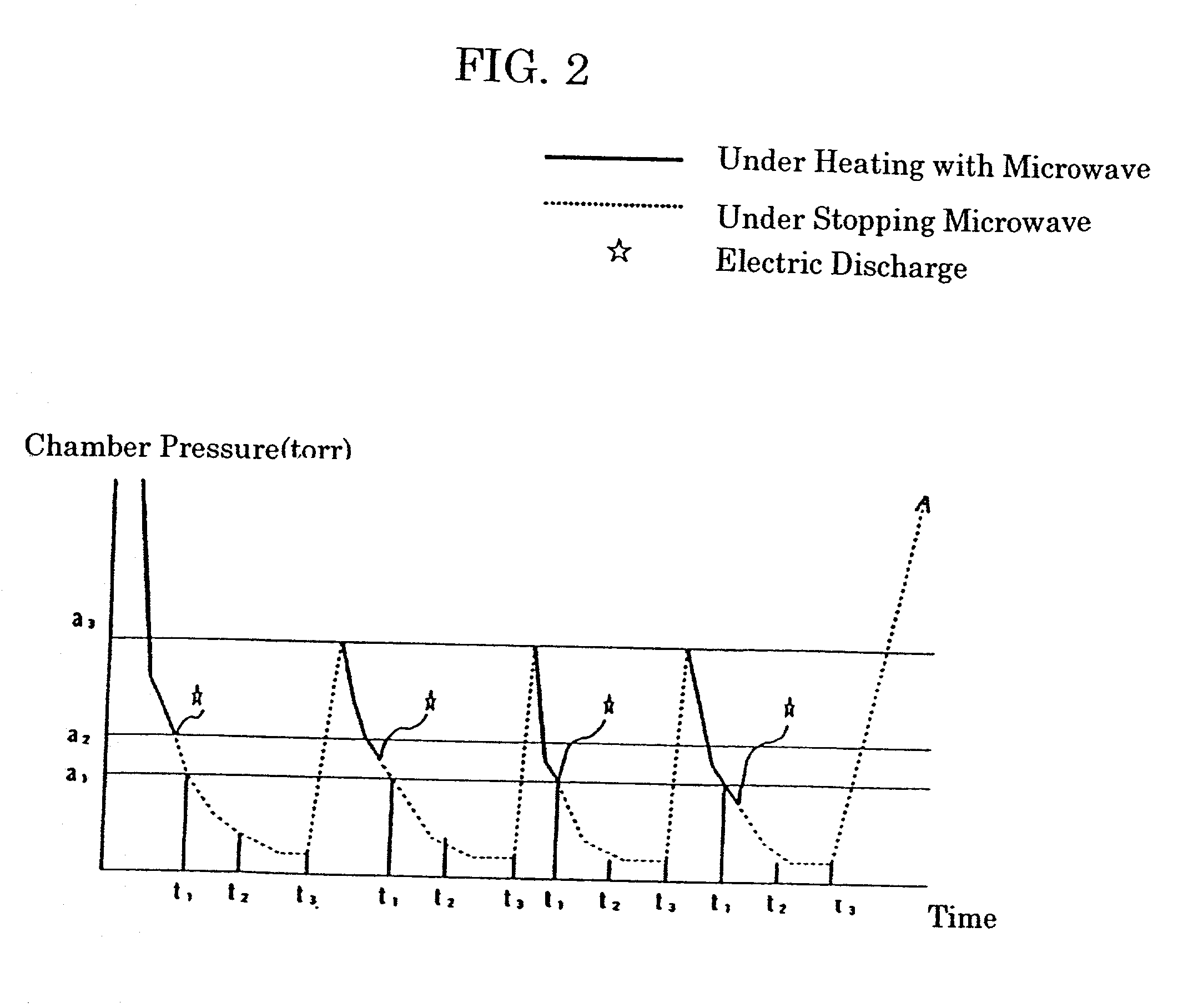Microwave defrosting under reduced pressure
a technology of microwave defrosting and reduced pressure, which is applied in the direction of electric/magnetic/electromagnetic heating, domestic stoves or ranges, lighting and heating apparatus, etc., can solve the problems of difficult to achieve uniform irradiation, difficulty in accurately establishing microwave irradiation time, and marked loss in the quality of frozen products
- Summary
- Abstract
- Description
- Claims
- Application Information
AI Technical Summary
Benefits of technology
Problems solved by technology
Method used
Image
Examples
specific embodiment 1
[0106] Specific Embodiment 1
[0107] Six kilograms of frozen beef in the form of three 2-kg blocks were placed inside a stainless steel pressure reducing chamber 1 having a width of 600 mm, a height of 600 mm and a depth of 700 mm, and then defrosting was carried out. During such defrosting process, a vacuum pump2, for example, dry pump was used at an output level of 3 kW to reduce the pressure toward a target pressure level of 1.5 torr, microwave heating was carried out at an output level of 0.6 kW, and changes in pressure were brought about using a pressure adjustment valve 4 in a manner that did not introduce air into the pressure reducing chamber during the defrosting process. Further, the pressure was measured in units of 0.1 torr, and the frozen beef was supported by two triangular bars made of fluororesin to create line contact or point contact, whereby the contact area between the bar and the frozen beef was made very small. The temperature of the frozen beef at the beginning ...
specific embodiment 2
[0109] Specific Embodiment 2
[0110] Eight kilograms of frozen tuna in the form of four 2-kg blocks were defrosted under conditions similar to those described in Specific Embodiment 1. However, in this case microwave heating was carried out at an output level of 0.7 kW. In this connection, because these blocks include skin and bones at harvest time, if they can be defrosted while maintaining a high quality, the defrosted product will yield 5.about.10% sashimi or sushineta. In the test conducted in this embodiment, the temperature of the frozen tuna at the beginning of the defrosting process was -55.degree. C. Further, the control of the termination of defrosting was carried out in accordance with the method of claim 8. A summary of the defrosting process is shown in the table below.
2TABLE B Time of Microwave Variation of Electrical Discharge Chamber Pressure Heating Temperature at Chamber Pressure after 30 sec. At4torr 1.sup.st Microwave Heating -55.0.degree. C. .fwdarw. -32.8.degree....
specific embodiment 3
[0112] Specific Embodiment 3
[0113] Thirty kilograms of frozen pork in the form of three 10-kg blocks were hung on a stainless steel rotatable jig using thin polypropylene cord, and then defrosting was carried out as this jig was rotated inside a stainless steel pressure reducing chamber having a width of 1,000 mm, a height of 1,200 mm and a depth of 1,200 mm. In this case, because a rotating jig was used, temperature measurements of the inside portion could not be carried out using an optical fiber thermometer. Further, an oil-sealed rotary vacuum pump was used at an output level of 5.5 kW, and microwave heating was carried out at an output level of 1.8 kW. In the test conducted in this embodiment, the temperature of the frozen pork at the beginning of the defrosting process was -40.degree. C. Further, the control of the termination of defrosting was carried out in accordance with the method of claim 7. In this regard, with a target weight loss of 0.8% established for termination of...
PUM
 Login to View More
Login to View More Abstract
Description
Claims
Application Information
 Login to View More
Login to View More - R&D
- Intellectual Property
- Life Sciences
- Materials
- Tech Scout
- Unparalleled Data Quality
- Higher Quality Content
- 60% Fewer Hallucinations
Browse by: Latest US Patents, China's latest patents, Technical Efficacy Thesaurus, Application Domain, Technology Topic, Popular Technical Reports.
© 2025 PatSnap. All rights reserved.Legal|Privacy policy|Modern Slavery Act Transparency Statement|Sitemap|About US| Contact US: help@patsnap.com



